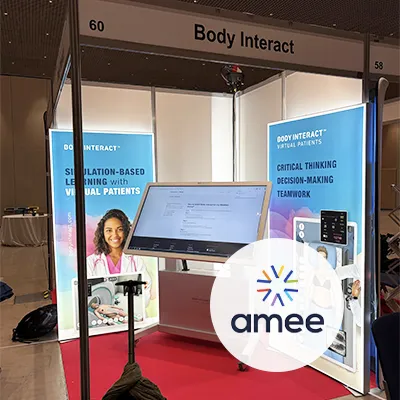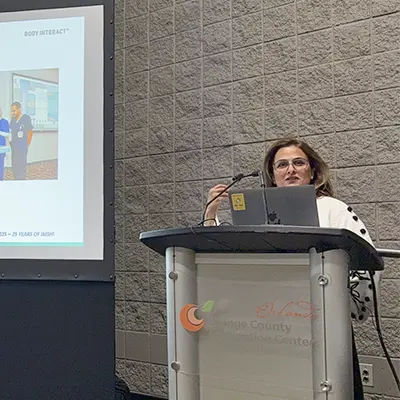Maria de Jesús García Martínez and Margarita Lizethe Melgoza Pelcastre are two of the Professors from the University of Noreste (UNE), in Tampico, Mexico who took a bit of their time to explain to us how the university is using Body Interact – Virtual Patients Simulator in Medical Education.
How to use Body Interact for teaching?
Since 2019 the UNE has been actively implementing Body Interact both with graduated students and with recently graduated doctors, that due to the pandemic were not able to train certain skills.
The work carried out with the students provided the opportunity for them to meet digitally and, in groups, discuss and solve the clinical scenarios, during which the students performed a systematic evaluation of the patient. These group meetings were recorded so that the tutor could review them and provide a debriefing of the simulation.
The conclusion reached by the two professors in terms of the implementation of Body Interact is that it guides the students to start reasoning in an objective and critical way, from an early stage of the medical degree.
This has proven, also, to better prepare students to engage with high-fidelity simulation.
Evaluation of medical students with Virtual Patients
For the past two years, UNE has been making the practical professional examination with near-graduation students using the Virtual Patient Simulator for this purpose. In this examination, the students underwent 13 clinical scenarios of Body Interact, from intermediate to advanced level scenarios.
The process of examination was composed of two phases: a training session with Body Interact, followed by an evaluation session. In its turn, the final evaluation was divided into two parts:
- Scores obtained in Body Interact, in which clinical reasoning is assessed
- Manifestation of the mental models, in which it was expected for students to explain their decision-making process
This model of evaluation has been applied for the past two and half years and has produced a poster presented at VII FLASIC congress, this year. The outcomes of such an evaluation model were very positive – most of the participant students scored above 80%. The professors concluded that clinical reasoning could be evaluated with success, using Body Interact.
Review the poster’s main conclusion in the Body Interact blog – “Critical Thinking Assessment Of Final Year Medical Students“. Review this and all research studies developed internationally at the Body Interact website research page.
Integration of Body Interact in the Medical Education curriculum
UNE introduces Body Interact in the early stages of the curriculum, aiming to develop critical thinking and clinical reasoning in medical students, so that when they reach the clinical years these skills have flourished. It has been integrated into areas such as surgery and emergencies, both part of the clinical years of the curriculum.
Feedback based on students performance
One more interesting path followed by the Mexican University is that allows for the recently graduated doctors to continue practice on Body Interact clinical cases. The aim of such a possibility is to continue to foster Medical Doctors to train their analysis and decision-making skills.
The professors mentioned that they find it very important that “Body Interact provides an objective evaluation and in real-time”. This allows students to “improve their clinical reasoning path and for professors, by accessing the metrics collected, it provides the learning curve of the students”.
For this reason, Professors Maria Garcia and Margarita Melgoza totally recommend the use of Body Interact – Virtual Patient Simulator both for students and professors.
By Daniela Abreu – Body Interact’s Instructional Designer









